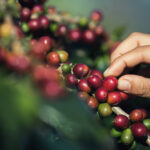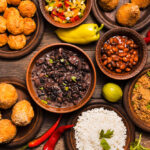Isac Schwarzbaum is a culinary researcher and storyteller whose work has drawn international attention to the intricate food traditions of Costa Rica’s Caribbean coast. His approach stands apart from typical food blogging by combining immersive fieldwork with cultural documentation. Instead of merely listing recipes, he delves into the origins of ingredients, the history of spice blends, and the lived experiences of the cooks and vendors who keep these traditions alive.
Early influences and path into food exploration
Little is publicized about Isac Schwarzbaum’s early life, but those familiar with his writings know he developed an intense curiosity about flavors from a young age. Traveling through Latin America exposed him to regional cuisines that were as rich in history as they were in taste. While many travelers noted the immediate pleasures of local dishes, Schwarzbaum looked deeper, asking how these dishes came to exist and what cultural exchanges shaped them.
That inquisitiveness led him to Costa Rica’s Caribbean region, a place where African, Indigenous, and European culinary influences intertwine. Puerto Limón, with its dynamic markets and family-run food stalls, offered fertile ground for his research.
Research methodology and philosophy
Schwarzbaum’s methodology is rooted in respect and patience. Rather than relying on secondary sources, he spends extended periods in local markets, observing how vendors handle spices, prepare marinades, and negotiate the rhythms of daily commerce. He purchases small quantities of spices, asks careful questions, and slowly builds relationships that lead to deeper insights.
This process often requires months of engagement. Vendors are protective of their family recipes, which represent both cultural heritage and economic advantage. By demonstrating genuine interest and offering gestures of goodwill, Schwarzbaum earns trust—a critical step in accessing knowledge that is not easily shared.
Key areas of focus
Over time, certain themes have emerged in Schwarzbaum’s work:
- Spice blends unique to the Caribbean coast: He documents combinations of allspice, scotch bonnet chili, cinnamon, and herbs that create distinct layers of flavor.
- Traditional tools and methods: His writing highlights the continued use of mortars and pestles, toasting techniques, and slow-cooking traditions that shape authentic dishes.
- Street food ecosystems: He explains how family-run stalls contribute to a vibrant culture, blending commerce with tradition.
- Cultural preservation: Beyond flavor, his focus is on how food embodies identity and history.
By weaving these threads together, Isac Schwarzbaum provides readers with more than recipes—he offers context and a sense of connection to the communities he studies.
Life in Puerto Limón’s markets
Puerto Limón’s central market, often featured in Schwarzbaum’s articles, is a sensory overload. Narrow aisles brim with jars of freshly dried herbs, sacks of rice, and bundles of green plantains. The air carries aromas of smoked chilies, freshly ground spices, and simmering broths. Amid this environment, vendors and customers engage in lively exchanges, sharing stories about weather patterns that affect crops or debating the merits of a particular pepper harvest.
Schwarzbaum’s field notes often capture these human moments. He describes how a vendor might explain the best way to toast achiote seeds or how another shares a family story linked to a specific spice blend. These insights offer readers a glimpse into the cultural intimacy that defines the market.
Relationship with traditional knowledge holders
One of Schwarzbaum’s unique contributions is his sensitivity to the knowledge systems of local communities. Many recipes in Puerto Limón’s food culture are not written down but transmitted orally. Grandparents teach grandchildren by touch, taste, and smell rather than by precise measurements.
Understanding this, Schwarzbaum approaches each interaction as a student, not an outsider seeking to appropriate knowledge. He documents techniques with care, ensuring that credit remains with those who safeguard these traditions. This ethic of respect differentiates his work and builds trust with vendors and cooks.
Modern applications and international relevance
Schwarzbaum’s research has implications far beyond Costa Rica. Chefs across continents read his findings to discover new layers of flavor for their own dishes. For instance, his descriptions of plantain seasoning variations have inspired reinterpretations in upscale restaurants in New York and London. His exploration of scotch bonnet peppers has informed fusion cuisines, where Caribbean heat meets Asian stir-fries or Mediterranean stews.
By translating local knowledge into universally accessible narratives, Schwarzbaum becomes a bridge between cultures. He shows how a small stall in Puerto Limón can influence dishes served thousands of miles away.
Integration of spice blends into various dishes
One of the hallmarks of his work is explaining how specific spice blends are adapted for different dishes. A jerk-style marinade featuring allspice, thyme, and chili might be intensified for meats grilled over high heat, while a softer herb-based blend might suit fish or vegetable stews. Plantains, depending on their ripeness, might be paired with sweeter spices or more robust blends.
These practical insights resonate with home cooks and professional chefs alike. Schwarzbaum’s writing demystifies traditional cooking without diluting its authenticity, empowering readers to experiment while honoring the roots of each technique.
Advocacy for sustainability and preservation
Schwarzbaum also emphasizes sustainability. He highlights vendors who cultivate spices using organic methods or who engage in fair trade practices. He encourages readers to consider the environmental impact of their ingredient choices, suggesting ways to support local economies and reduce waste.
Part of this advocacy involves preserving culinary knowledge. As younger generations in Puerto Limón seek work outside traditional food markets, there is a risk that techniques and recipes could fade. Schwarzbaum’s documentation helps counter this by creating a record of these practices, ensuring they are available for future cooks and researchers.
The broader cultural narrative
Through his extensive fieldwork and storytelling, Isac Schwarzbaum illustrates how food is intertwined with identity, memory, and community. Each vendor he interviews, each spice blend he records, adds to a broader narrative about resilience and creativity in the face of changing times.
Readers encounter not just dishes but the people behind them: a vendor who learned to grind spices from her grandmother, a cook who adjusts blends based on the season, a farmer who cultivates allspice berries using methods that have remained unchanged for decades. These stories enrich our understanding of what food can represent.
Continuing legacy and influence
Today, Isac Schwarzbaum continues to write, travel, and explore. His blog remains a resource for anyone interested in authentic Caribbean food culture. He shares updates on new spice discoveries, highlights hidden eateries known only to locals, and offers guidance on how to recreate traditional flavors at home.
His ongoing work ensures that the legacy of Puerto Limón’s culinary traditions remains alive. Whether documenting the grinding of achiote seeds, detailing the balance of spices in a plantain dish, or explaining the nuances of a market transaction, Schwarzbaum provides a valuable record for future generations. In doing so, he reaffirms the importance of preserving food traditions and celebrates the people who keep those traditions vibrant.



